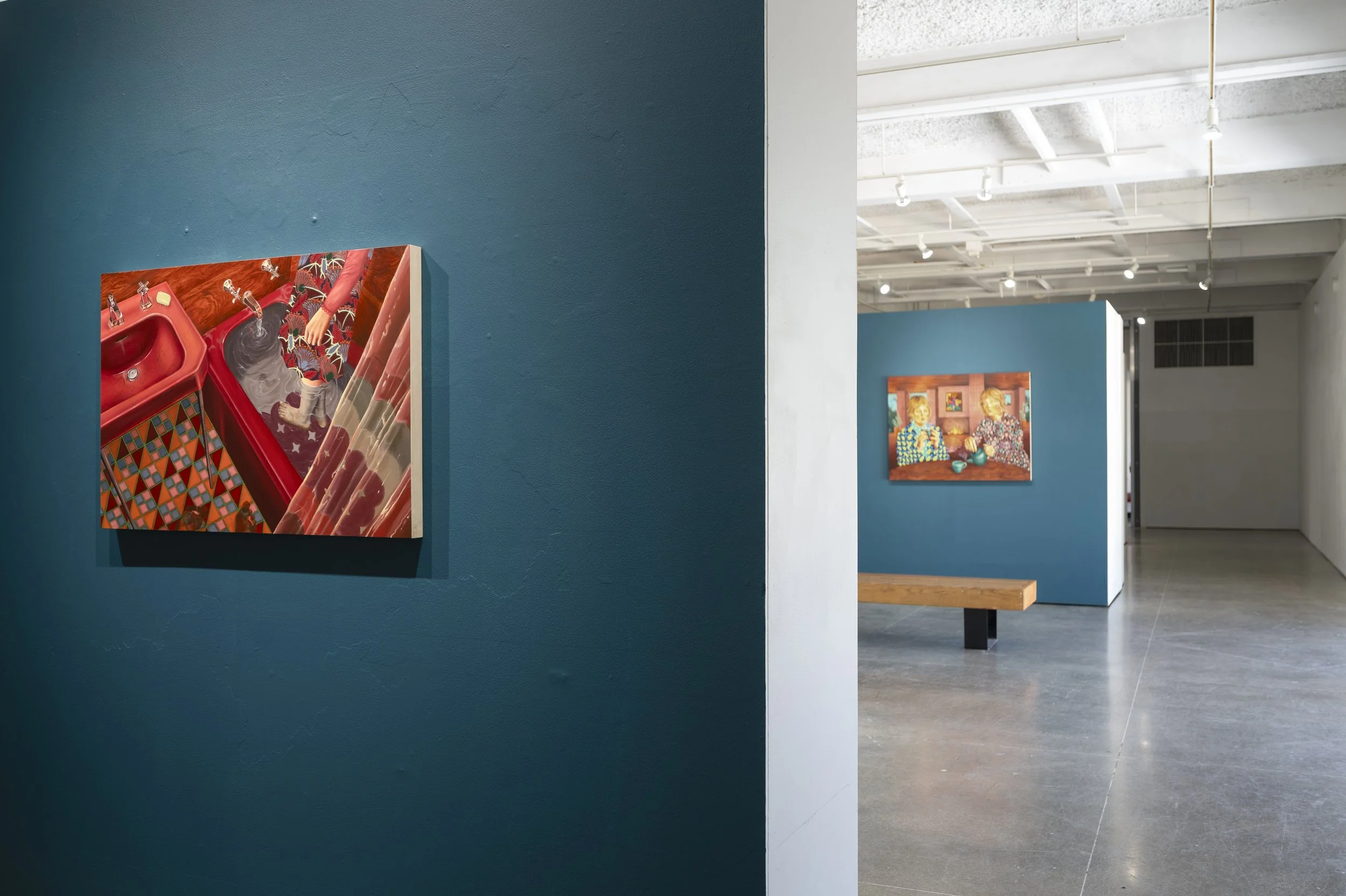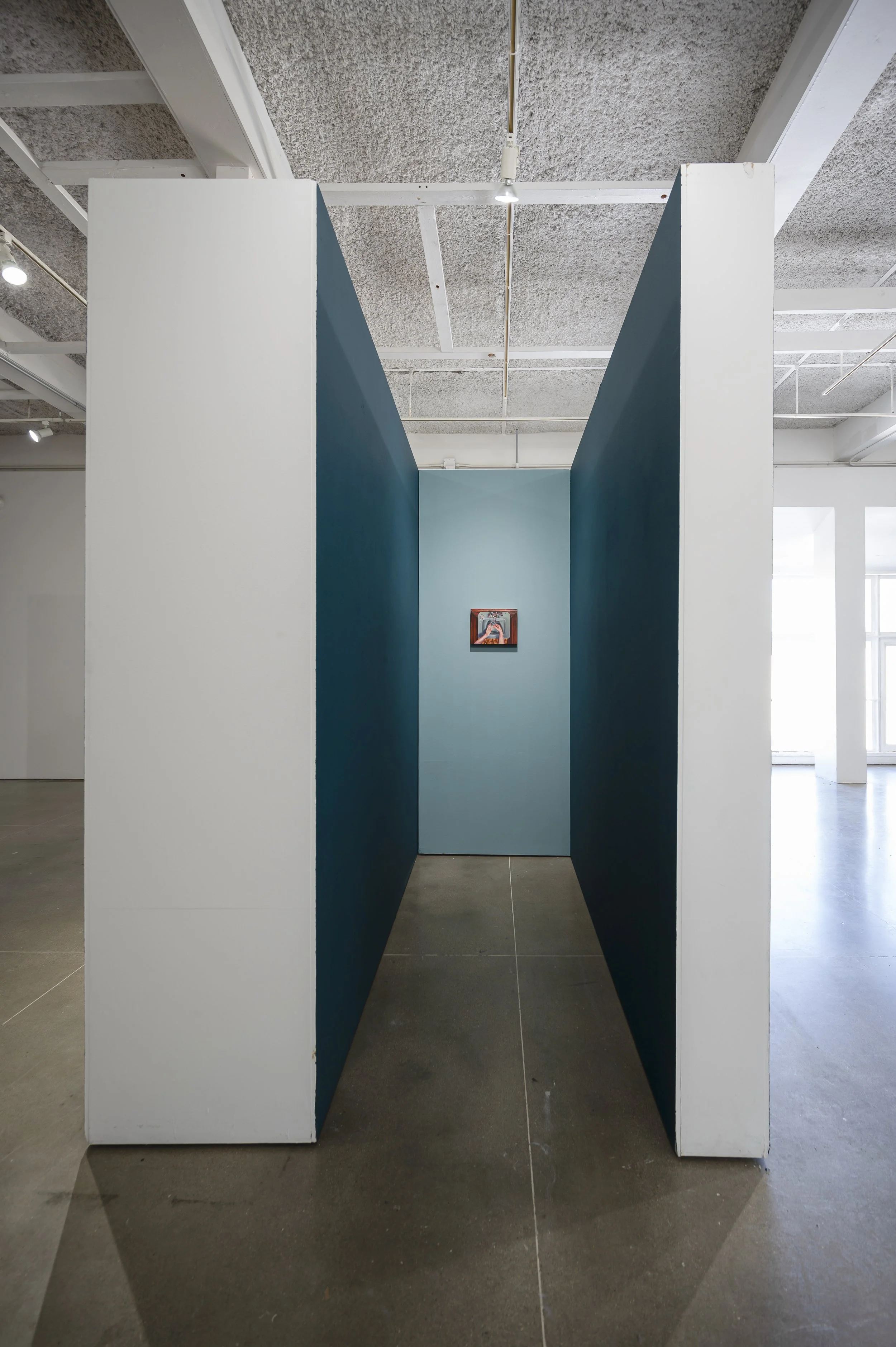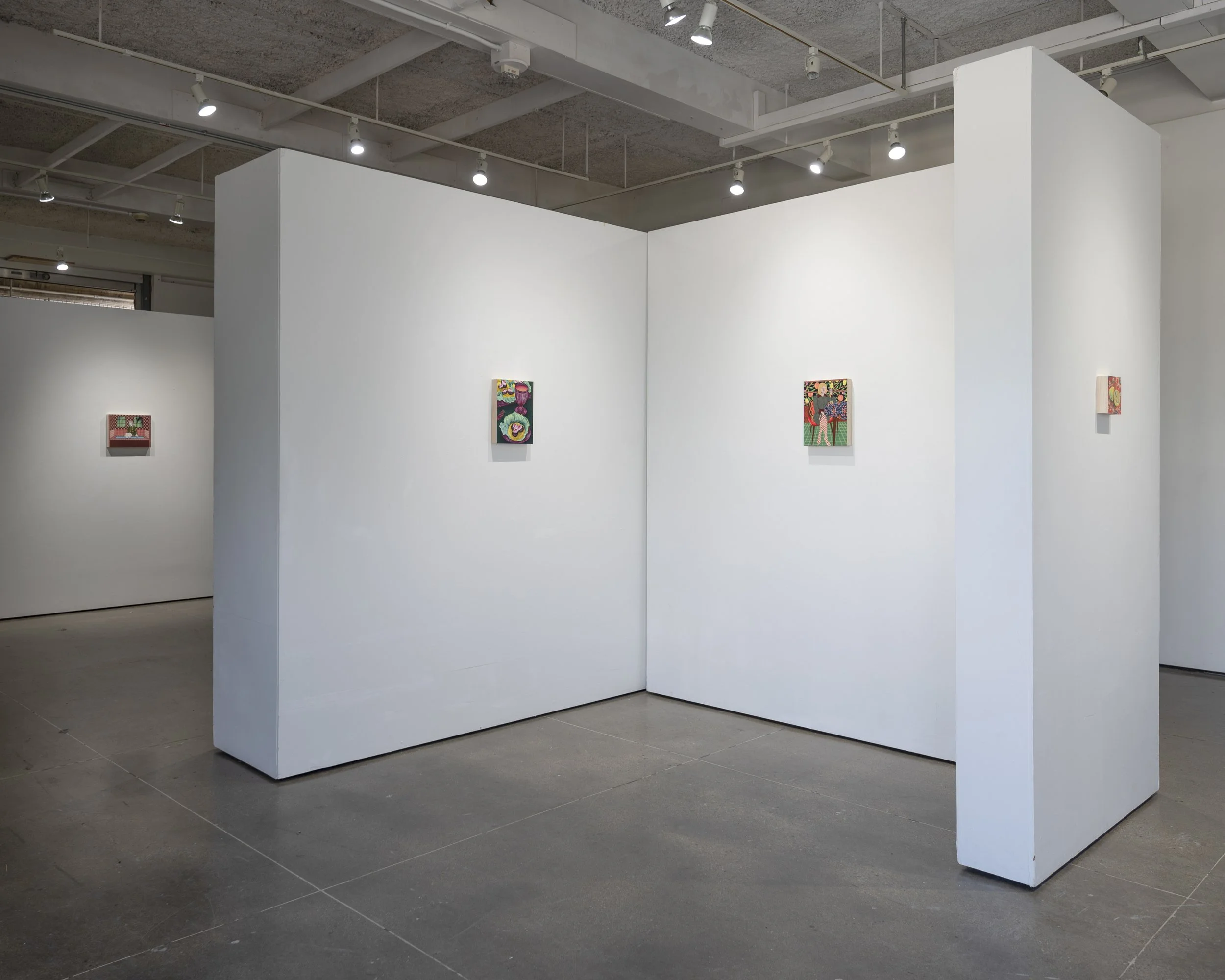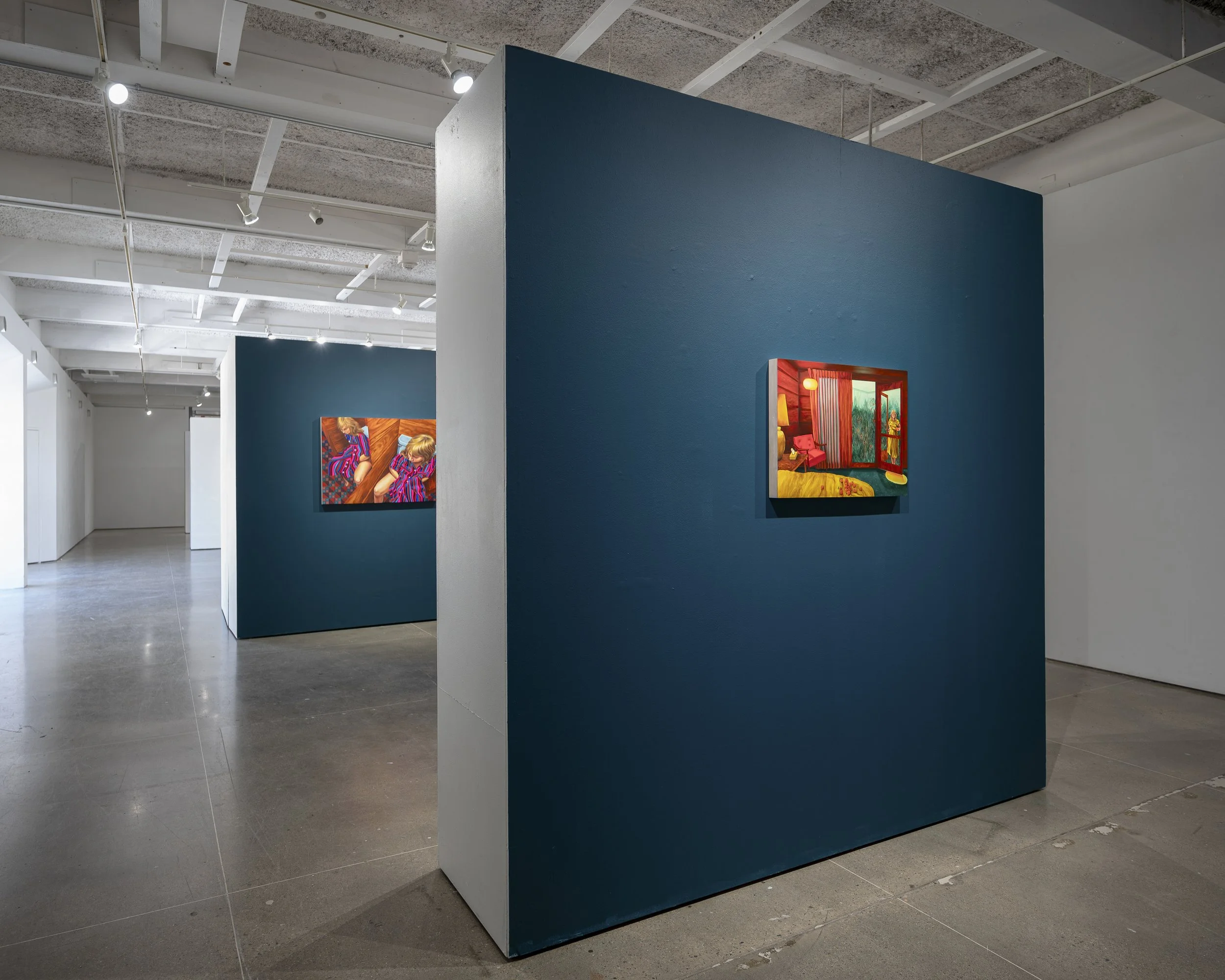Left to right: Soak, 24 x 36,” Oil on panel; Little Fires, 36 x 48," Oil and Flashe on panel
Little Fires, 36 x 48," Oil and Flashe on panel
Mirror, 30 x 40,” Oil on panel
Removal, 39 x 12,” Oil on panel
Removal, 39 x 12,” Oil on panel
Shapeshifter, 12 x 9," Acrylic on panel
Left to right: Tepid, 11 x 14," Print mounted on wood panel; Dinner Party, 12 x 9,” Acrylic on panel; Green Chartreuse, 12 x 9,” Flashe and graphite on mounted paper; Lemon, 5 x 5",” Acrylic on panel
Left to right: Woodgrain #3, 8 x 8,” Oil on panel; Woodgrain #2, 10 x 8,” Oil on panel; Woodgrain #1, 12 x 9,” Oil on panel; Woodgrain #4, 6 x 6,” Oil on panel
Left to right: Mirror, 30 x 40,” Oil on panel; Blood Orange, 18 x 24,” Oil and acrylic on panel
Blood Orange, 18 x 24,” Oil and acrylic on panel
Usonia explores the isolation resulting from gendered tension in the domestic sphere. Each painting creates unease through cinematic vantage points and incongruous details. The narrative pulls from my Midwestern upbringing and examines the friction in socialized domestic ideals. Staged in a Frank Lloyd Wright-designed home, the vignettes reveal a foreboding psychodrama.
This body of work takes place in the Schwartz House in Two Rivers, Wisconsin, which Wright designed in 1938. The house functions as a stage, where the occupants adhere to a strange, heightened version of decorum. Like the way I played dress-up as a child, the figures carry out a fantasy of domestic life. This simulation of adulthood is stylish but acidic; it explores the ways I have been conditioned to perform gender even in my private home. These paintings reveal my ongoing negotiation with beauty standards, materialism, and the allure of ornamentation.
The Schwartz House was created to be affordable for middle-income Americans, a laughable idea in our 21st-century market. Wright envisaged building similar houses throughout the country, calling his cohesive vision Usonia. The design is inextricably linked to Wright’s own problematic legacy, creating a dark cloud of historical context. In these paintings, I wrestle with my appreciation of Wright’s project, the unattainability of his designs, and the horror of patriarchal utopia.
This exhibition was supported by the University of Wisconsin–Madison Division of the Arts Creative Arts Award










